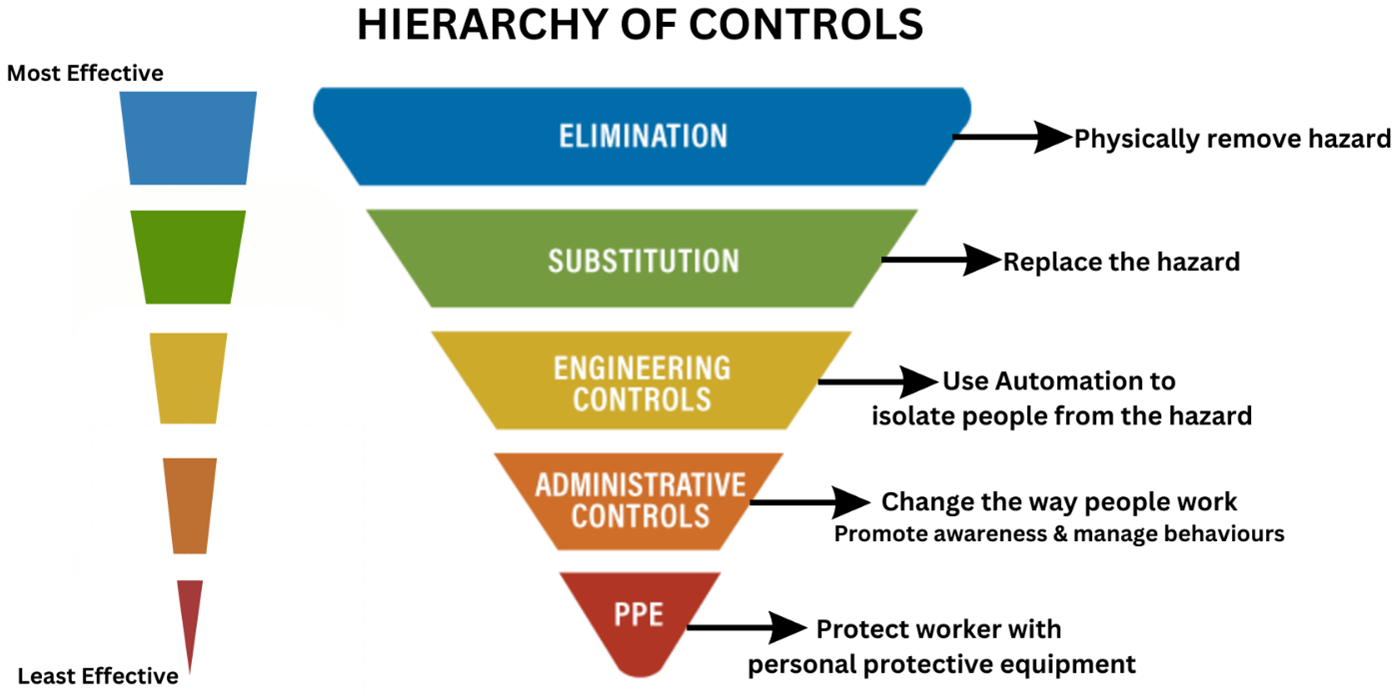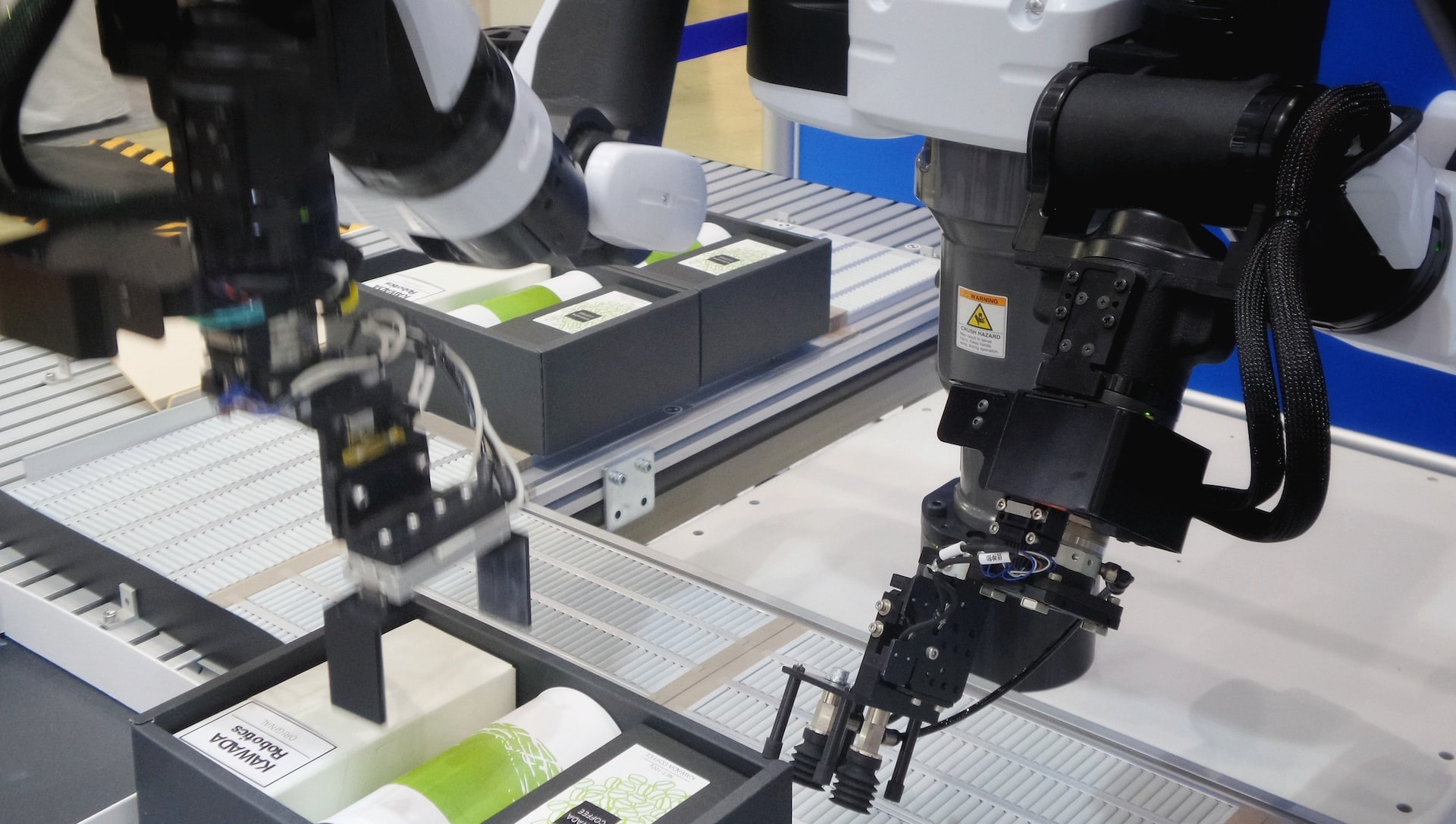In today’s workplace, automation technology is becoming more prevalent. Workplace accidents can have a significant negative impact on a business, ranging from low staff morale to huge reputational and financial costs. Organisations can use automation to reduce workplace accidents alongside realising productivity increases. This article will outline how automation can be a valuable tool for reducing the likelihood and consequences of industrial accidents while improving efficiency.
Hierarchy of Controls
It is common practice for Health & Safety managers to use the hierarchy of controls to mitigate risks.

Using the hierarchy of control as a risk management framework helps identify the most effective and reliable methods of risk mitigation. This hierarchical structure starts with the elimination of the hazard and progresses downward to using personal protective equipment (PPE) as a last resort. While elimination and substitution are the most challenging options to implement into an existing process, automation kicks in as a cost-effective engineering control measure.
There are several ways in which automation technology can be used to mitigate workplace risks:
Physically distancing employees from hazards
Automation makes remote work possible as it can physically distance workers from hazards. The use of automation helps in completing potentially dangerous jobs which would otherwise be done by workers - limiting human exposure to hazardous enviroments or situations.
Robots might be operated to handle dangerous materials in an industrial environment, lowering the risk of worker exposure. Robotic welders, for instance keep workers away from sparks, fumes, and other potential welding risks while being supervised by skilled workers.
Automation technology can also be applied to remotely monitor and control processes, enabling employees to work at a safe distance. By limiting exposure to hazards, the likelihood and severity of accidents is eventually reduced, resulting in a safe and healthy work environment.
Automating repetitive tasks
By automating repetitive tasks businesses increase workplace safety and boost productivity as a result. Numerous manual jobs, like working on an assembly line or entering data, can be monotonous and exhausting, and this increases the likelihood of mistakes and accidents.
By taking over certain tasks, automation technologies can assist to alleviate these repetitive tasks and free up workers to engage on other complex jobs. Since automated systems are frequently more capable of working quickly and accurately than humans, this can also help to increase the overall effectiveness of the work process.
Reducing employee fatigue
Accidents may occur as a result of worker errors. Errors might occur as a result of miscommunication, confusion but also exhaustion. By taking over jobs that are physically demanding or need continuous attention for extended periods of time, automation technology has the potential to alleviate employee tiredness.
Continuous process monitoring
Automated systems can continuously produce data and monitor process in real-time. This makes it possible for such systems to respond to emergencies far more promptly than humans. Automated systems can stop accidents and equipment damage by shutting down machinery or warning staff before a potentially dangerous situation worsens.
Safety relays can be used to connect sensors and interlocks to cut off power to motors and actuators preventing a possibly hazardous event. An example would be automatic shutting down of boilers and turbines in thermal power plants should the amount of water in the steam drum exceed a safe level. This shutdown safeguards both the equipment from catastrophic damage and workers from potential harm.
Nevertheless, a word of caution - while automation helps in mitigating existing risks, it can create new unanticipated hazards. Therefore, it is crucial to conduct a fresh risk assessment exercise in order to put in place safety measures so as to manage the impact of the new risks.
Conclusion
To sum up, automation technology can drastically lower the risk of accidents, making the workplace safer while increasing uptime and productivity. With the advent of AI and IoT into the workplace, the process can become even more effective and efficient. By strategically integrating automation technologies, businesses can create a safer and more productive work environment for their employees, benefiting the organisation and its workers.

